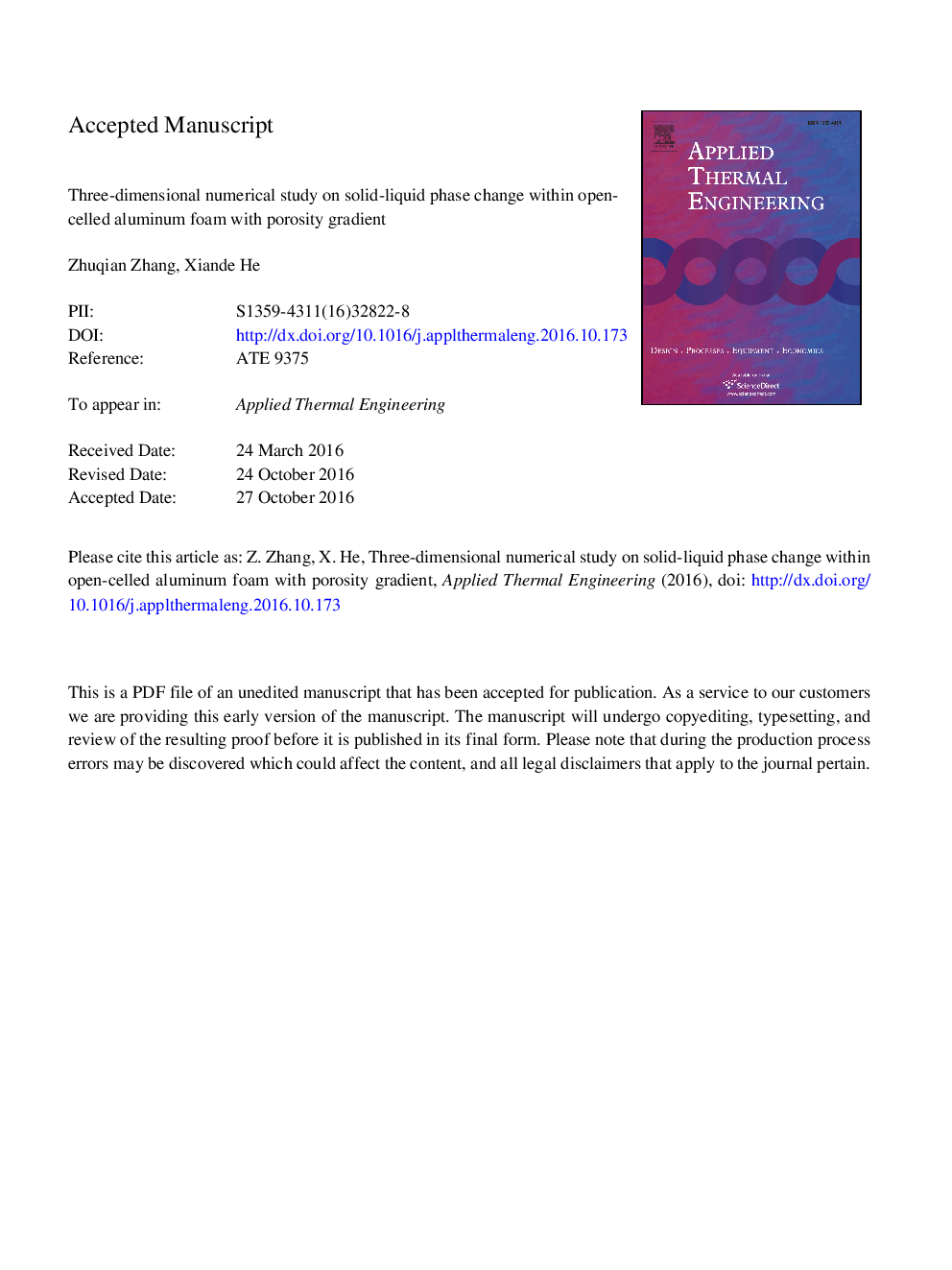| Article ID | Journal | Published Year | Pages | File Type |
|---|---|---|---|---|
| 4991807 | Applied Thermal Engineering | 2017 | 36 Pages |
Abstract
An intricate three-dimensional porous medium was established to investigate the melting process of phase-change material (PCM) infiltrated in metal foams. Two kinds of metal foam with porosity gradient were designed to enhance the melting process. One of them was consist of three homogeneous porosity slices (85.9%-91.3%-95.8%), the other was with the porosity varying from 85.9% to 95.8% linearly. The evolution of the phase-change interface, velocity field distribution, and melting volume fraction of the composite PCM were studied numerically. The heat-transfer mechanism of the composite PCM was revealed by obtaining the evolution of the phase-change interface and the calculations of heat storage density and heat storage rate. The results indicated that the heat storage density increased with augmentation of the equivalent porosity. The metal foam with a porosity gradient increased the heat storage rate by enhancing the heat-transfer process at the corner of the bottom region. Finally, the ratio of the total heat-flux magnitude was always smaller than 1, which indicated that the heat conduction dominated the entire heat-transfer process.
Related Topics
Physical Sciences and Engineering
Chemical Engineering
Fluid Flow and Transfer Processes
Authors
Zhuqian Zhang, Xiande He,
